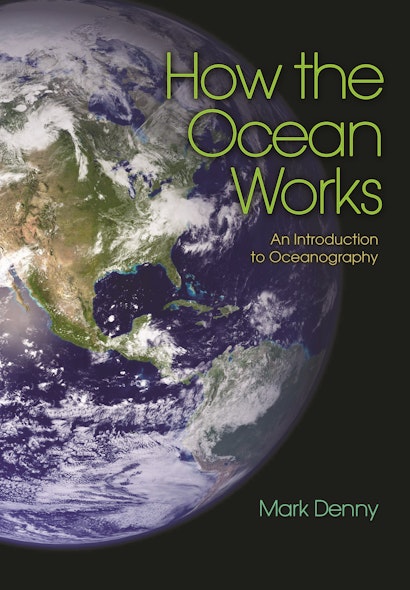The world’s oceans account for roughly 71 percent of the planet’s surface and 99 percent of its livable volume. Any study of this huge habitat requires a solid foundation in the principles that underlie marine biology and physical and chemical oceanography, yet until now undergraduate textbooks have largely presented compilations of facts rather than explanations of principles. How the Ocean Works fills this gap, providing a concise and accessible college-level introduction to marine science that is also ideal for general readers.
How are winds and currents driven? What is the dilemma of the two-layered ocean? Mark Denny explains key concepts like these in rich and fascinating detail. He explores early scientific knowledge of oceans, photosynthesis, trophic interactions and energy flow, and the impacts of human activities on marine and atmospheric systems. Focusing each chapter on a major topic and carefully explaining the principles and theory involved, Denny gives readers the conceptual building blocks needed to develop a coherent picture of the living ocean. How the Ocean Works is an indispensable resource that teaches readers how to think about the ocean—its biology, mechanics, and conservation.
- Provides a concise, up-to-date introduction to marine science
- Develops the conceptual basis needed to understand how the ocean works
- Explains fundamental principles and theory
- Includes color illustrations and informative diagrams
- Serves as a college textbook and a reference for general readers
Awards and Recognition
- Honorable Mention for the 2008 PROSE Award in Earth Sciences, Association of American Publishers
"How the Ocean Works is as ambitious a title as this reviewer's freshman biology text, intimidatingly titled Life. However, much to his credit, Denny, not only acknowledges this fact, but manages to turn it to his advantage. . . . How the Ocean Works is an invaluable addition to any undergraduate or graduate library where even a single marine-focused class is taught."—S.E. Brazer, Choice
"The book is a very good read, well written, illustrated and explained, kept clear for a scientific layman, but also with necessary rigour in the Appendices associated with key chapters for those wanting that bit more physical or mathematical background."—Grant Bigg, The Geographical Journal
"Steve Vogel describes Mark Denny as the ultimate autodidact, and teaching something, whether to oneself or to one's porch mates, is the ultimate learning approach and one that promises to produce a very readable introduction to oceanography. The book largely delivered on that promise and on my high expectations both Denny's preface and his prior works."—Quarterly Review of Biology
"How the Ocean Works is a well written, thoroughly enjoyable book that comfortably bridges the roles of introductory oceanography textbook and fireside (or more appropriately, seaside) reading. Although its nontraditional coverage of ocean science may preclude it from use as the primary text in some classrooms, it will be a valuable resource for both teachers and fans of the world's oceans."—Peter Drzewiecki, American Biology Teacher
"While explicitly designed as a textbook, How the Ocean Works is sure to be of interest to anyone looking for a deeper understanding of the bodies of water that cover 71 percent of the earth's surface and make up 99 percent of the volume of the planet that is capable of supporting life."—Civil Engineering
"Denny gives readers the conceptual building blocks needed to develop a coherent picture of the living ocean. How the Ocean Works is an indispensable resource that teaches readers how to think about the ocean—its biology, mechanics, and conservation."—World Book Industry
"An elegant presentation of how the ocean works. Denny's purpose is to review a selection of oceanographic topics to provide a background for considering such current public issues as climate change and marine fisheries. Accessible and enjoyable reading, and the scholarship is very sound."—Nicholas D. Holland, University of California, San Diego
"A well-written, coherent, interesting introductory text for teaching oceanography. The vast majority of the books on the market are full of glitz and relatively little else, and there is a great need for a book of this type."—Carol Arnosti, University of North Carolina, Chapel Hill

